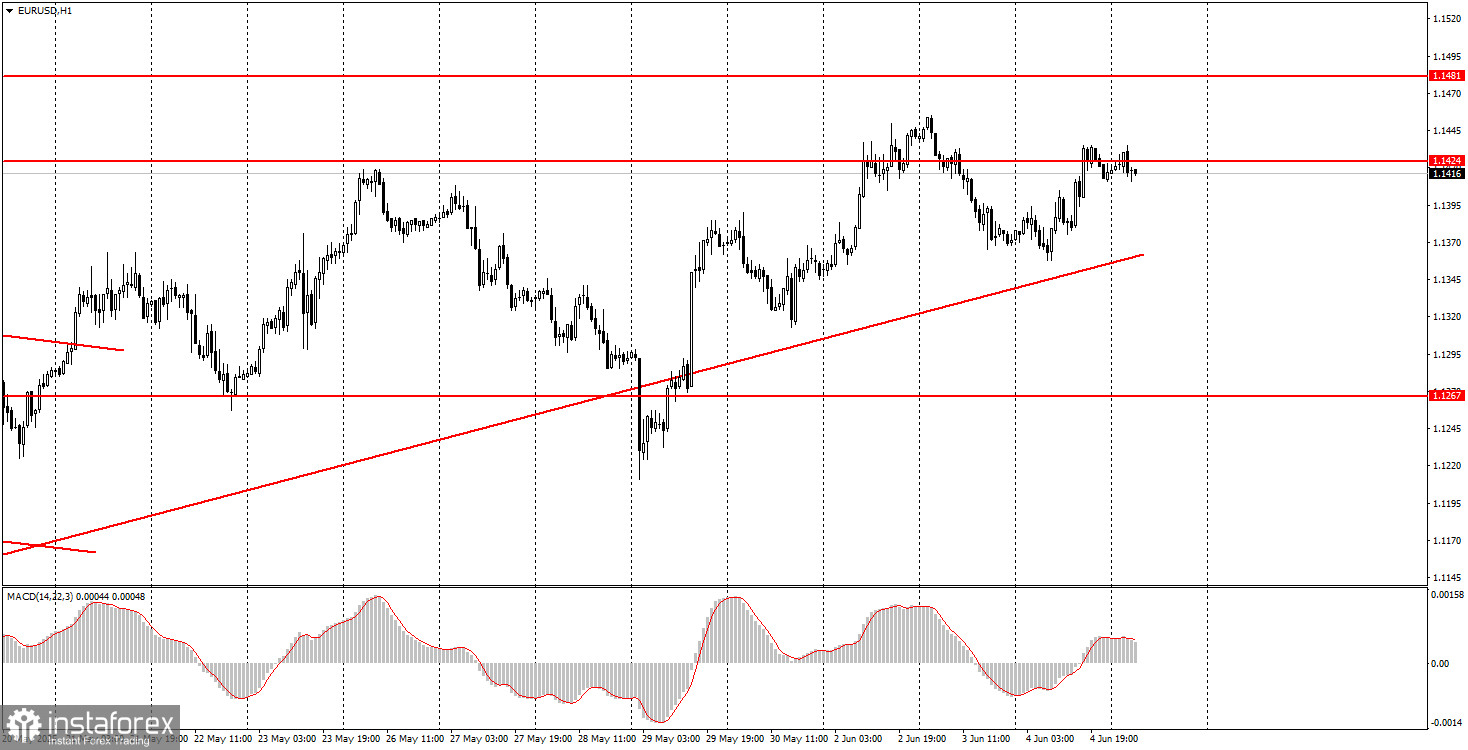Analysis of Macroeconomic Reports:

There are very few macroeconomic reports scheduled for Thursday. Only two secondary reports from the UK and the US are all traders will get today. The construction sector activity report is objectively less significant than the services and manufacturing sector reports. And the market already ignored those indices on Monday and Wednesday. The weekly jobless claims report will be released in the US, but it holds little importance ahead of Friday's unemployment rate publication.
Analysis of Fundamental Events:

The only significant event on Thursday's fundamental events is the meeting of the European Central Bank. However, even such a major event may trigger a relatively restrained and odd market reaction. Recall that the ECB has lowered its key rate seven times and is expected to do so for the eighth time today. Yet, the euro has only risen over the past four months, completely ignoring this factor. Therefore, the ECB meeting is unlikely to impact the current trend significantly.
We believe the market still only cares about the ongoing trade war. The dollar's decline could continue if trade agreements with most countries are not signed before the grace period expires — and that ends in just a month. The dollar could keep falling even without new tariffs from Trump, as the market's sentiment toward the US president and his policies remains extremely negative. The International Trade Court ruled to block Trump's tariffs, but by evening, the Court of Appeals overturned that decision. Shortly thereafter, it was announced that tariffs on steel and aluminum imports would be raised.
Conclusions:
During the fourth trading day, both currency pairs will mostly trade based on technical factors unless Trump makes new high-profile statements during the day. Of course, the ECB meeting will influence the movement of both pairs throughout the day, but the impact is unlikely to be strong enough to disrupt the overall market sentiment of "selling the dollar at every opportunity."
Key Rules for the Trading System:
- Signal Strength: The shorter the time it takes for a signal to form (a rebound or breakout), the stronger the signal.
- False Signals: If two or more trades near a level result in false signals, subsequent signals from that level should be ignored.
- Flat Markets: In flat conditions, pairs may generate many false signals or none at all. It's better to stop trading at the first signs of a flat market.
- Trading Hours: Open trades between the start of the European session and the middle of the US session, then manually close all trades.
- MACD Signals: On the hourly timeframe, trade MACD signals only during periods of good volatility and a clear trend confirmed by trendlines or trend channels.
- Close Levels: If two levels are too close (5–20 pips apart), treat them as a support or resistance zone.
- Stop Loss: Set a Stop Loss to breakeven after the price moves 15–20 pips in the desired direction.
Key Chart Elements:
Support and Resistance Levels: These are target levels for opening or closing positions and can also serve as points for placing Take Profit orders.
Red Lines: Channels or trendlines indicating the current trend and the preferred direction for trading.
MACD Indicator (14,22,3): A histogram and signal line used as a supplementary source of trading signals.
Important speeches and reports, which are consistently featured in the news calendar, can significantly influence the movement of a currency pair. Therefore, during their release, it is advisable to trade with caution or consider exiting the market to avoid potential sharp price reversals against the prior trend.
Beginners in the Forex market should understand that not every transaction will be profitable. Developing a clear trading strategy and practicing effective money management are crucial for achieving long-term success in trading.





















